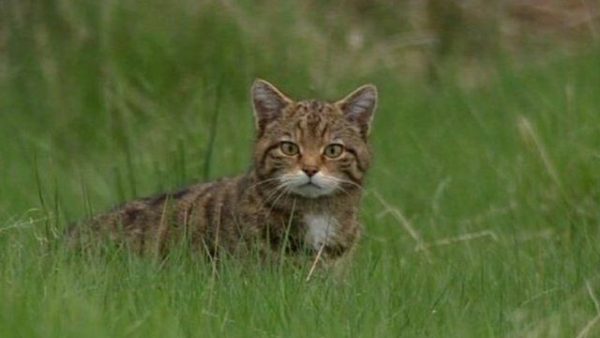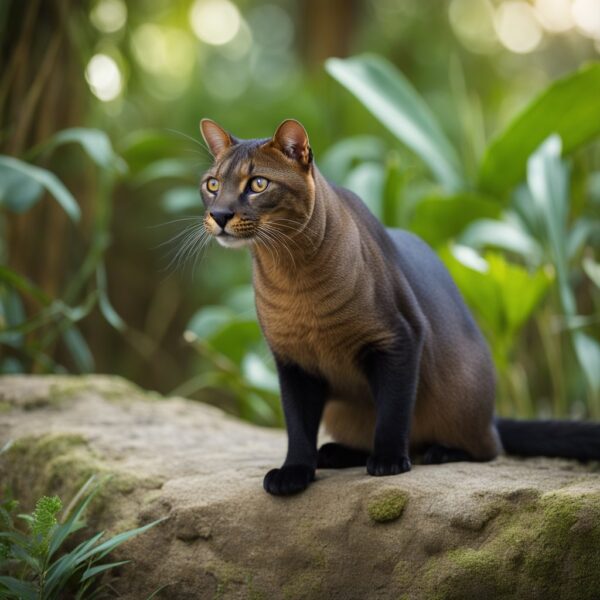
Smallest Wild Felids : Have You Heard of Them?
The smallest wild cats make up over 80% of the world’s wild cat species and can be found across various continents such as Africa, Asia, North America, South America, Central America, and Europe. These fascinating creatures, which are roughly the size of domesticated cats or slightly larger, inhabit diverse ecosystems ranging from deserts and grasslands to hills and mountains.
However, these captivating felines face numerous conservation challenges similar to their larger counterparts, such as habitat loss, poaching, and depletion of prey populations. To learn more about individual small wild cat species, explore our list below.
Key Takeaways
- The majority of wild cat species are small cats distributed across diverse habitats worldwide
- Small wild cats face significant conservation threats, including habitat loss, poaching, and prey scarcity
- Exploring details about individual species helps in understanding these unique animals and supports conservation efforts

Small Cats in the Wild List
The variety of small wild cats in the world is astonishing, with species spread across different continents and habitats. Here is a list of some of these fascinating creatures:
- African Golden Cat (Caracal aurata): Inhabits the forests of Africa and has two subspecies. It mainly preys on rodents and squirrels. Conservation Status: Vulnerable.
- African Wildcat (Felis lybica): Found in Africa, Asia, India, and China, with three subspecies. It has slightly different markings than the European wildcat. Conservation Status: Least Concern.
- Andean Mountain Cat (Leopardus jacobita): Inhabits Chile, northern Argentina, Bolivia, and the Peruvian Andes. Conservation Status: Endangered.
- Asian Golden Cat (Catopuma temminckii): A nocturnal species found in China, Nepal, parts of India, Sumatra, Malaysia, Thailand, and Southeast Asia, with two subspecies. Conservation Status: Near Threatened.
- Bay Cat | Bornean Bay Cat (Catopuma badia): Found only on the island of Borneo, it is the size of a large domestic cat. Conservation Status: Endangered.
- Black-footed Cat (Felis nigripes): One of the smallest wild cats, found in South Africa, Botswana, and Namibia. Conservation Status: Vulnerable.
- Bobcat (Lynx rufus): Found in North America, from Canada to the northern part of Mexico, and inhabits diverse habitats. Conservation Status: Least Concern.
- Canada Lynx (Lynx canadensis): Inhabits Canada, parts of the United States, Nova Scotia, and New Brunswick, in forests and wooded areas. Conservation Status: Least Concern.
- Caracal (Caracal caracal): Primarily found in dry regions of Africa, India, and Asia. Conservation Status: Least Concern.
- Chinese Mountain Cat (Felis bieti): Found only in China, recognized as a valid species in 2017. Conservation Status: Vulnerable.
- Eurasian Lynx (Lynx lynx): Found in Europe, Russia, central Asia, and Tibet. It is the largest of its species. Conservation Status: Least Concern.
- European Wildcat (Felis silvestris): Inhabits various regions across Europe, with two subspecies. Conservation Status: Least Concern.
- Fishing Cat (Prionailurus viverrinus): Found in various locations in Southeast Asia, including Java, Sumatra, Peninuslar Malaysia, India, and Sri Lanka. Conservation Status: Vulnerable.
- Flat-headed Cat (Prionailurus planiceps): Found only in Sumatra, Peninsular Malaysia, and the islands of Borneo. Conservation Status: Endangered.
- Geoffroy’s Cat (Leopardus geoffroyi): Primarily located in Argentina, with some subspecies found in Paraguay, Bolivia, and Brazil. Conservation Status: Least Concern.
- Iberian Lynx (Lynx pardinus): Inhabits the Iberian Peninsula in southwest Spain. It is considered the most endangered wild cat species in the world. Conservation Status: Critically Endangered.
- Jaguarundi (Herpailurus yagouaroundi): Found in South America, Central America, and Mexico, and mainly inhabits lowland areas. Conservation Status: Least Concern.
- Jungle Cat (Felis chaus): Lives in various regions across Middle Eastern and Asian countries near water. Conservation Status: Least Concern.
- Kodkod | Guina (Leopardus guigna): Inhabits the central and southern regions of Chile in forests. It is one of the two smallest wild cats in the world. Conservation Status: Vulnerable.
- Leopard Cat – Mainland (Prionailurus bengalensis): Inhabits various regions across Asia and the Indian subcontinent, with different subspecies. Conservation Status: Least Concern.
This diverse group of small wild cats showcases the fascinating variety of feline species across the globe. Their range of habitats, sizes, and conservation statuses highlight the need for continued efforts in research and conservation to protect these remarkable creatures.

Frequently Asked Questions
Common Small Wild Cats in Various Regions
The distribution of small wild cats differs across the world, but some common species found in specific regions include:
- Africa: African Wildcat (Felis silvestris lybica)
- Asia: Pallas’s Cat (Otocolobus manul), Leopard Cat (Prionailurus bengalensis)
- South America: Ocelot (Leopardus pardalis), Geoffroy’s Cat (Leopardus geoffroyi)
Distinctive Features of Small Wild Felids
Several small wild cat species have unique features, such as:
- Big Ears: Sand Cat (Felis margarita)
- Spots: Ocelot (Leopardus pardalis), Margay (Leopardus wiedii)
Number of Small Wild Felid Species
There are approximately 33 species of small wild cats in existence worldwide.
The Smallest Wild Cat Species
The smallest wild cat species in the world is the rusty-spotted cat (Prionailurus rubiginosus), which can be found in Sri Lanka and India.
The Most Aggressive Little Wild Cat
While aggressiveness can vary, the black-footed cat is known to be one of the most assertive and fierce small wild cats. The Black-footed cat is Africa’s smallest cat and the deadliest of the entire cat family – with a 60 percent hunting success rate.
Differences Between Small Wild felids and Domesticated Cats
Despite similarities in size, the key differences between small wild cats and domesticated cat breeds are:
- Behavior: Wild cats have a strong hunting instinct and display independent and territorial behaviors, while domesticated cats tend to be friendlier and social.
- Appearance: Wild cats usually have specific markings and coat patterns crucial for camouflage, whereas domesticated cats have a more diverse range of coat patterns.
- Legal Status: Many small wild cats are protected by conservation laws and cannot be legally owned as pets, while domesticated cats can be kept as pets.